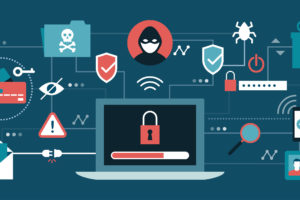It’s more important than ever to keep your IT infrastructure safe from data breaches and cyber attacks, especially now that companies are taking advantage of cloud computing and using it to store precious information. Just like how home and office alarm systems keep intruders away, cybersecurity solutions repel hackers and malware.
If you still don’t think you need extra layers of protection for your network, here are four cybersecurity facts for 2018 to convince you otherwise.
-
Hackers are on the FBI’s most wanted list
In 2014, the Federal Bureau of Investigation (FBI) included a “Cyber” section to its Most Wanted list. The infamous computer programmer Park Jin Hyok is its newest entry. He’s a member of the North Korea-sponsored Lazarus Group, the cybercrime organization responsible for the multimillion-dollar Bangladesh Bank cyber-heist of 2016 and the WannaCry ransomware outbreak of 2017.
According to the FBI website:
“Park was alleged to be a participant in a wide-ranging criminal conspiracy undertaken by a group of hackers employed by a company that was operated by the North Korean government. The front company — Chosun Expo Joint Venture, also known as Korea Expo Joint Venture — was affiliated with Lab 110, one of the North Korean government’s hacking organizations. That hacking group is what some private cybersecurity researchers have labeled the ‘Lazarus Group.’ On June 8, 2018, a federal arrest warrant was issued for Park Jin Hyok in the United States District Court, Central District of California, after he was charged with one count of conspiracy to commit wire fraud and one count of conspiracy to commit computer-related fraud (computer intrusion).”
-
Mobile malware infections are increasing
Advances in technology have turned the huge computers of yesteryear into the portable smartphones and tablets we use today. While mobile devices use different operating systems and are designed differently from computers, hackers have been conducting research on how to control these machines since 2004, when the program “Cabir” was developed to control cell phones.
Based on data gathered from Symantec’s Internet Security Threat Report 2018, the number of new malware strains created for mobile devices has gone up by 54 percent since 2017.
-
Most mobile malware are found in third-party app stores
The same report by Symantec mentioned that 99.9 percent of mobile malware found by antivirus software originated from third-party app stores (i.e., stores that are not vetted by major operating system developers such as the iTunes Store or Google Play). The apps in these stores were developed by people who did not work on Apple and Android operating systems or manufacture mobile devices, and they can only be downloaded from unofficial online app stores.
You may be getting that expensive game app for free by downloading a modified version through these websites and manually installing it on your device at the potential cost of getting malware as well. Is it worth the risk? It’s a good idea to download your apps from reputable and verified vendors in the iTunes Store or Google Play.
-
The average cost of a data breach is increasing
No company wants to deal with a data breach because it’s getting more expensive to repair the damages.
According to Ponemon Institute’s 2018 Cost of a Data Breach 2018 study for IBM, it takes at least 196 days for a business to discover a data breach, and a typical organization in America will spend an average of $7.91 million on repairing damages caused by one.
Is your company safe from cyber threats?
While preventing data breaches will always pose a challenge to your business, there are ways to protect your IT infrastructure, such as investing in comprehensive cybersecurity services from Vodigy Networks.
We will conduct a comprehensive audit of your IT environment, develop a custom-fit cybersecurity strategy, and implement it for you so you concentrate on increasing your bottom line. Get in touch with us today so our professionals can help your business succeed.




